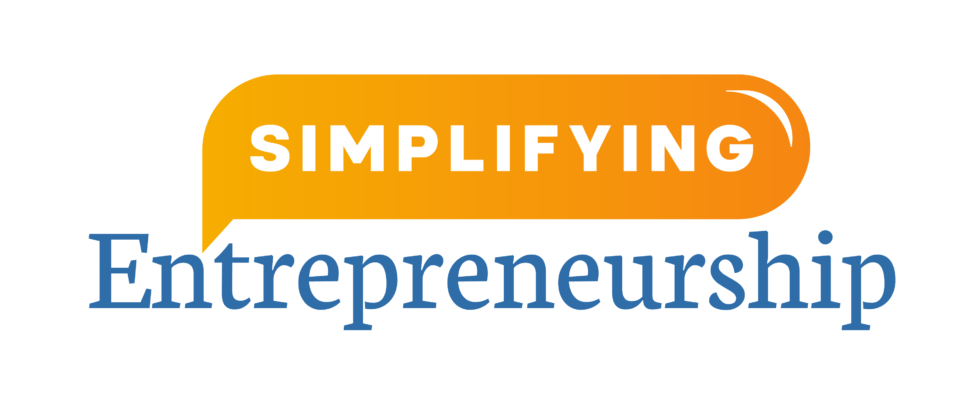It can happen anywhere, any time. In the middle of the night, on a bus ride, during a shower, while drinking your morning coffee. A business idea comes to you that – in the moment – feels like the next great thing. But today we are here to tell you to stop trusting your ideas. Yet what should you do instead?
If you are the visionary type who has a lot of ideas for that next great business, they can be pretty distracting. So instead, write them down in a notebook, a tablet, your phone … anywhere that you can come back to them months or even years later and they will still be there. When or if you do, odds are that only one out of every hundred will be a great idea. Remember that even for visionaries, usually ideas are not that good – which is okay, by the way! Because the thing that matters is what you do with them.

The first benefit of this idea journal strategy is that you will get the ideas out of your head and into the real, concrete world. Ideas can be distracting when they are circling around in your head, because our brains kind of love to be distracted. We have squirrel brains! Or as David Allen says, “Your head is for having ideas not for storing them.” So get the whole idea out!
A second benefit you will soon discover is that the very act of writing down your ideas will help you come up with better ones. Even while writing them down, you may see flaws you could never see during the initial excitement. Other times when you get the idea out, the concept will come back bigger and better. You will see even more ways to add value. You can always keep adding to that document, even turning one big idea into a whole document by itself. The practice of discovering and getting those ideas out will make all the other ideas you come up with stronger. Try making idea formation a practice by, if need be, forcing yourself to have and write down ideas. Make a daily habit of idea formation and build those idea-forming muscles.
And third, you will start to see how many of your first ideas have very little real staying power. If you took action on every one, you would almost every time be setting yourself up for repeat failure. And the ones that do have traction, those that even after a year away still look good, now that might be something.
People say failure is good for you. And yes, you can learn a lot from a failed business venture. But what about ninety-nine business ventures followed by one success? Will you even get through the first fifty? Are you serving anyone with those initial failures, even yourself? Were those failed ideas actually tied to someone having a problem, or were they just ideas that sounded good at the time?
So after you have written your list of ideas, how do you decide which to pick and which to leave behind? First, we should get one thing certain: the best businesses you will start as an entrepreneur are going to be in the same place as your passion. Find the place you want to serve. Is that sports? Travel and leisure? A hobby? Your local community? Go deep into that place and look for ideas there.
Second, rather than focusing on your list of ideas, identify one simple problem in a specific place in the world. You should find that problem in the place you want to serve. Use those idea-forming muscles and find a solution to fix that problem in the best, fastest way. When you offer a solution to a problem people experience every day, you will discover a path to serving them with the goods or services you can provide. That is how you build a business and make enough of an impact on people so that they want to keep relying on you. Even when you have a successful business, remember to focus on problems and solutions, not all the new ideas you come up with along the way. Doing so will save you and your business a lot of time and money.

Finally, take your minimum viable product to the smallest group of people you can really test the solution with. For a serious business, start with a hundred people that are your ideal client and ask them if your solution solves their problem. Before making a brand or designing a logo or deciding how to market yourself, you need to show people the benefits of your new venture. You might discover you need to make some changes so the solution works for them. And even when the solution works, are they willing to pay for that solution? Will anyone write a check for you the moment they understand what you want to do?
Imagine if you will that you have done everything so far. You have your idea journal in your pocket, you are in the place you want to serve, and you have found a problem and come up with a solution. But even after all this time and after spending all your investment money, getting all your copyrights in and your team set up … What do you do if, after a year, you have only sold a few thousand dollars worth of your product? Shift focus and check whether there is any real need in the larger market. Does your business itself need to be smaller? Or was your solution always smaller than any market could carry? This is why you test to see if enough people will put down their money.
In summary, do not trust your first ideas. Write them down, let them sit for a while, see if any more comes from that first idea, and in the process get better at coming up with ideas. Build a habit of having ideas and don’t fear failure, but also don’t go with every idea. Then find the place you want to serve, come up with a simple problem and the best solution, and test your minimum viable product. Make sure your solution solves someone’s problem and is thus truly viable as a business.
This article was written based on Season 3, Episode 4 of the Simplifying Entrepreneurship Podcast where I interviewed Alex Sanfilippo from PodPros, or you can watch the full version of the interview below.




0 Comments